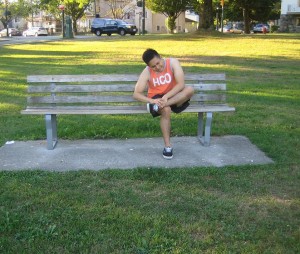Bone spurs are triggered by excess bone growth and can exist for years without even triggering any symptoms. In such cases, no treatment is required. On the other hand, they can rub on the neighboring tissues, muscles and nerves, thus resulting to pain and swelling. In case a bone spur develops close to the Achilles tendon at the back of the ankle, it can cause pain with various movements. The treatment for this condition can range from getting enough rest to surgery, depending on the severity of the symptoms.
RICE method
In case a bone spur develops close to the Achilles tendon and rubs on the neighboring tissues, it can lead to bursitis in the heel area. Take note that this condition typically affects the retrocalcaneal bursa that is a sac filled with fluid situated close to the heel where the calf muscle attaches to the heel bone.
The initial step in treatment is to minimize the inflammation. This includes getting enough rest, application of an ice pack, compression or wrapping the affected area and elevation of the foot. This technique is commonly known as the RICE method.

Anti-inflammatory medications can be given if the swelling is severe. It is not recommended to inject steroids into this area since it can lead to the weakening of the Achilles tendon and increase the risk for rupture.
Changes in the shoes used
Overuse or overtraining can strain on the Achilles tendon and the heel bone. Once these areas weakened, the bone spurs form in an attempt to strengthen the heel bone. When managing these symptoms, it is required to make the necessary adjustments to the footwear used such as the following:
- Using extra padding in the shoes
- Heel cup for elevation of the heel
- Changing the type of shoes used
In addition, the podiatrist might assess the walking patterns and arches. In some cases, orthotics is prescribed to adjust any issues. These are specifically designed to relieve pressure off the heel as well as the Achilles tendon.
Physical therapy
By working with a physical therapist, a strengthening regimen can be started that focuses on the muscles that surround the Achilles tendon. This can effectively take off pressure from the tendon.
A mild stretching program must be developed to help keep the area flexible and less susceptible to injury. It is also beneficial for the physical therapist to review the training techniques and make the necessary suggestions to avoid overuse as well as incorrect training principles that might contribute to the condition. The objective is to stay active while minimizing the amount of wear and tear on the heel and Achilles tendon.
Surgery
Once the conservative measures fail to relieve the symptoms, surgery might be needed. After the symptoms become chronic, it might be required to take away the bone spur and reconnect the Achilles tendon. Since this area has poor blood supply, recovery from the surgery can take up to 3 months. After this period, physical therapy might be required and can take up to 1-2 years to return to normal levels of activity. It is vital to seek treatment as soon as the symptoms appear to prevent the condition from getting worsen and becoming chronic.
